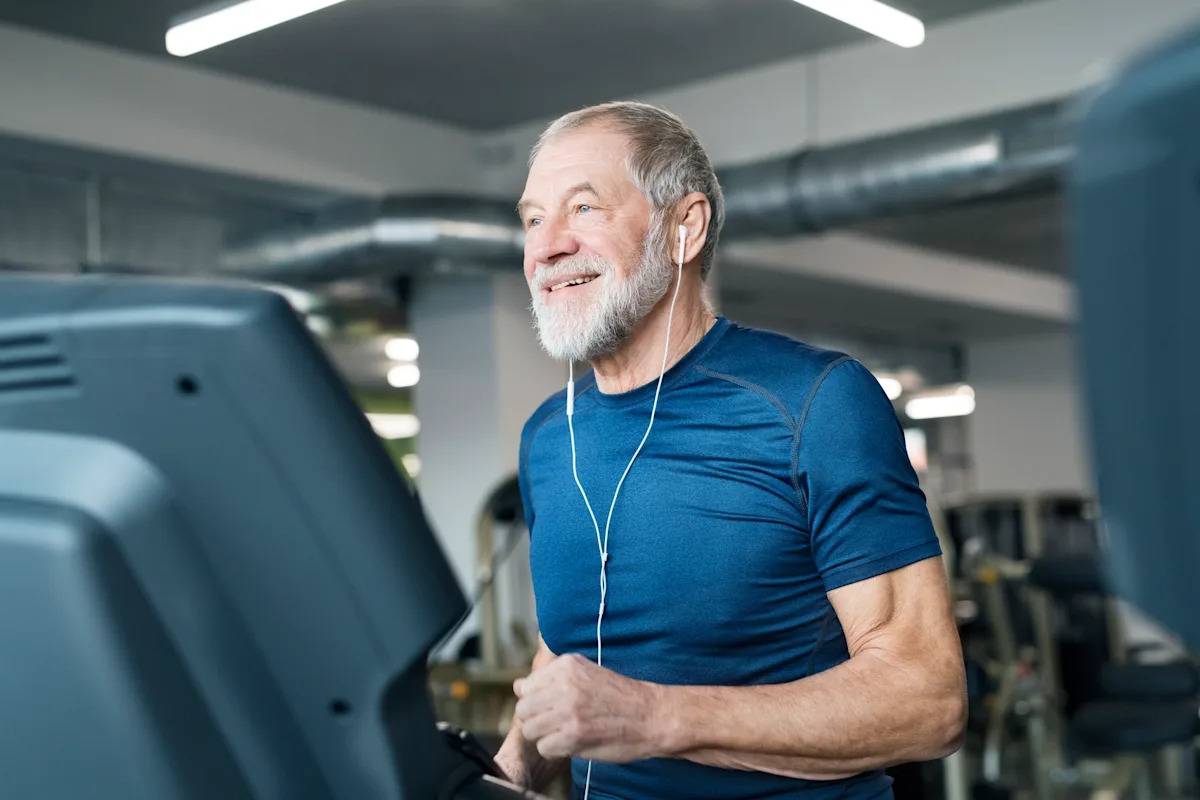Staying within a healthy weight range is important for our health. Being overweight or obese could affect your self-esteem and contribute to mental health problems such as depression, according to the NHS.
It can also lead to obesity, which can increase your risk of conditions such as type 2 diabetes, coronary heart disease and some cancers.
But the challenge to stay slim can get tougher with each decade.
As you get older, your body naturally loses muscle, which slows your ability to burn calories efficiently for energy. This can lead to the well-documented ‘middle-aged spread’ that may creep in after 40, even if your diet and lifestyle largely remain the same.
“Once you get into your 40s, staying slim becomes harder due to age-related muscle loss, so strength training needs to become the foundation of your fitness plan in midlife and beyond,” Rowan Clift, training specialist at Freeletics, tells Yahoo UK.
If you’re looking to safely and sustainably drop a few extra pounds, Sam Herron, head coach at F45 Oxford Circus adds that now’s the time to shift away from crash dieting and intense cardio.
To help you get the most from your workouts, we asked Herron and Clift to break down the best ways to see results at each milestone birthday…
In Your 40s… swap marathons for the weights room
In your twenties, your metabolism is ticking at its fastest, so extreme high-intensity workouts and crash diets can deliver fast results. But aside from being unsustainable and potentially unsafe, these tactics often backfire in midlife.
When you lose weight primarily through cardio and restrictive dieting, you also lose a degree of muscle mass, which causes your metabolism to slow down and makes it harder to maintain a healthy weight over time.
“While it’s important to retain a small amount of cardio for heart health, I’d recommend doing at least two to three strength sessions per week in your 40s, focusing on compound lifts [which work multiple muscle groups at the same time] like squats, deadlifts and presses,” advises Herron.
“Make sure you’re spending enough time under tension to challenge your muscles adequately, and that you’re focusing on progressive overload – the technical term for gradually increasing your weights over time, to keep seeing progress.”
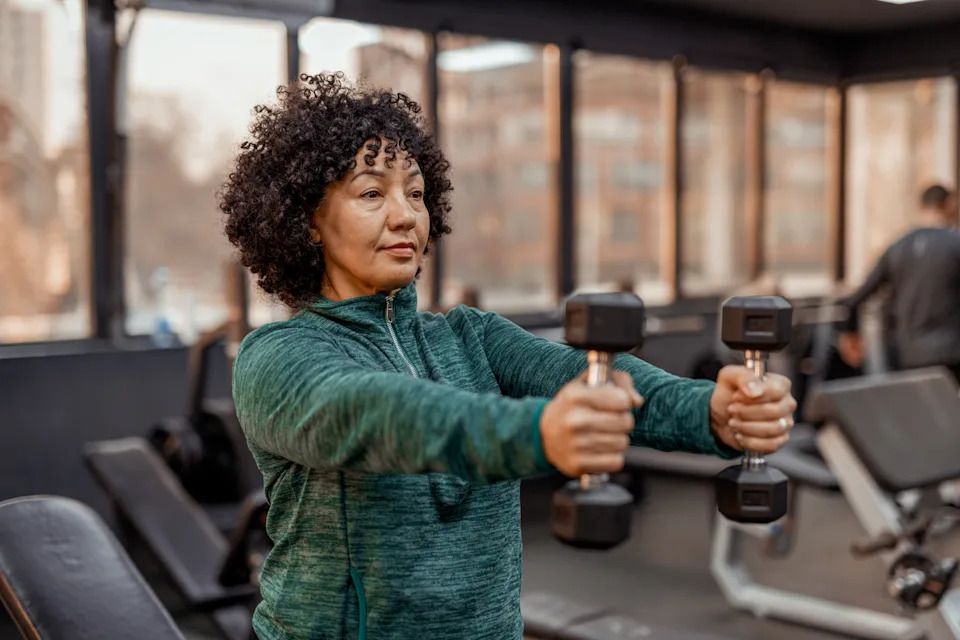
As we age our bodies naturally lose muscle, so strength training is key. (Getty Images)
If you don’t have access to a gym, you can still reap the benefits of strength training without the need for heavy weights. Focus on movements like push ups, planks, squats and lunges, which use a combination of gravity and your own bodyweight to add resistance.
On the nutrition side, Herron recommends supporting your body’s changing needs with a creatine supplement, which helps fuel short-duration, high-intensity activities like beginner weight lifting, while plating up enough quality protein to support muscle synthesis.
“If your aim is to build muscle, a good guideline is one gram of protein per kilogram of body weight per day,” says Herron. While this is slightly higher than the general guideline of 0.75g, it ensures your body has enough available to support muscle growth and repair.
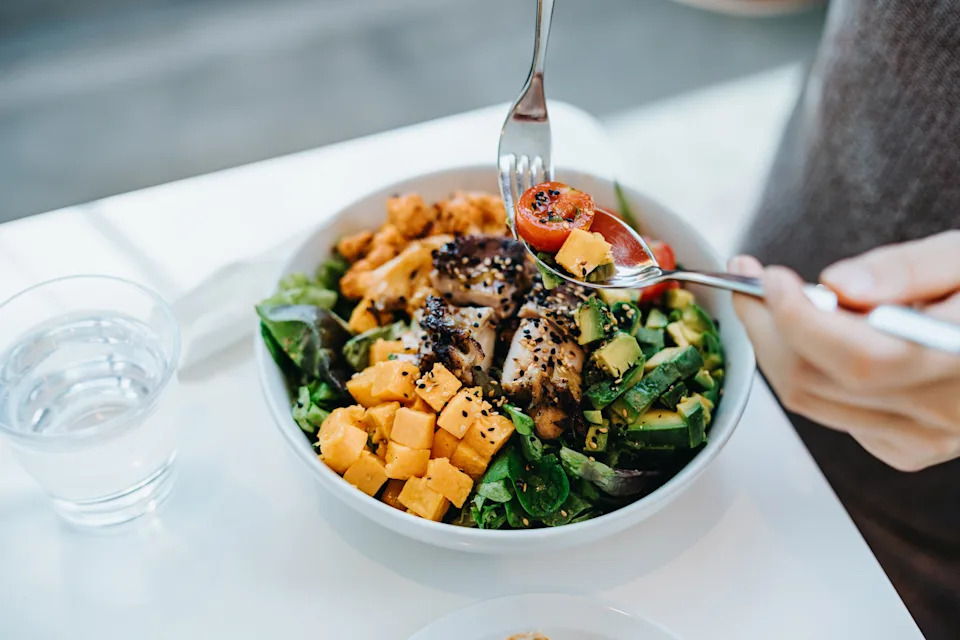
Focus on eating well rather than restrictive diets. (Getty Images)
In your 50s… stick to a sustainable calorie deficit
By the time you hit your 50s, preserving muscle mass becomes even more important – not just for staying a healthy weight, but for joint support and everyday strength.
At this stage, many people benefit from tracking their calorie intake, aiming for a moderate deficit rather than severe restriction.
“In layman’s terms, that means less food and more exercise, but in a safe and sustainable way,” says Clift. “Staying in a small calorie deficit while prioritising protein and lifting weights is the best way to lose fat while preserving lean muscle.”
It’s also a good time to get serious about mobility training. Often mistaken for stretching or flexibility, mobility drills are all about improving and protecting the range of motion in your joints and muscles – a ‘use it or lose it’ skill that often declines as we age.
Think deep bodyweight squats, hip openers, thoracic spine rotation, and shoulder pass-throughs using a resistance band. Done regularly, these exercises can help prevent injury and keep you moving well
As strength training can quickly lead to tight myofascial tissue (a connective layer that wraps around the muscles), working on your mobility can also help reduce tightness and painful DOMS – the the muscle soreness you can feel a day or two after exercise..
“Unlike static stretches like toe touches, mobility drills like wall squats and cat cows can help you to avoid stiffness and injury when lifting weights in midlife,” says Herron.
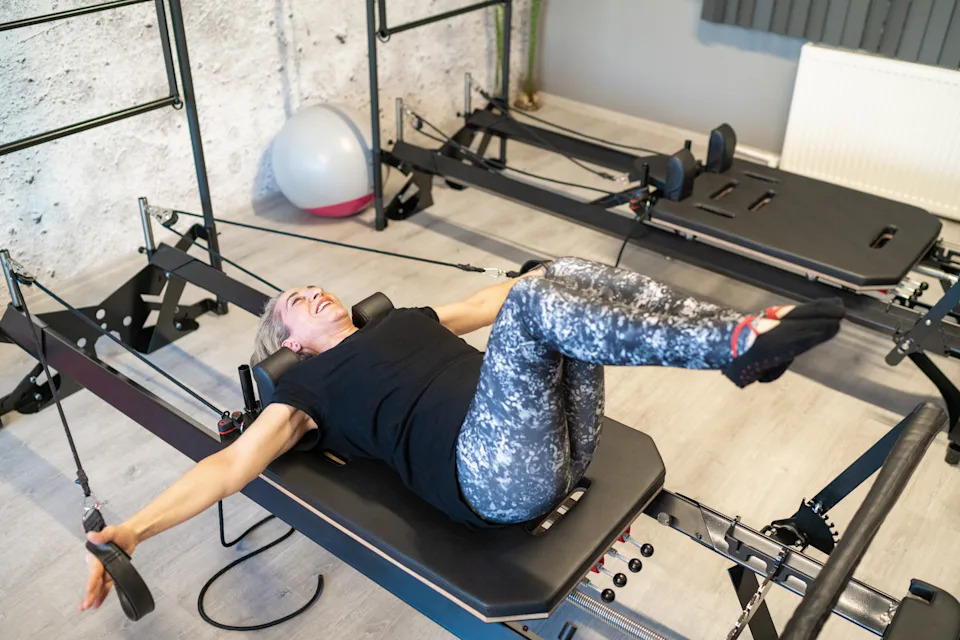
Reformer Pilates can improve balance and coordination as well as strength and flexibility. (Getty Images)
In your 60s… trade heavy free weights for Reformer Pilates
In your 60s, osteoporosis and other degenerative bone issues can become more prevalent, so the focus should shift from intensity to longevity, via exercise that doesn’t overload your body.
“You can still build strength, but lower-impact modalities like Reformer Pilates are often a better option than heavy free weights, which can be challenging on your joints and bones,” says Herron
“As Pilates blends strength and flexibility in one, it’s a great discipline for improving functional movement as you age,” he notes. It’s also a smart way to reduce your risk of falls, which become more common later in life.
“Within a Reformer class, you’re typically working on a moving bed that shifts side to side and wobbles – firing up your coordination and stabilising muscles in a really effective way,” Herron explains.
“This dynamic challenge activates your body’s natural balance systems far better than traditional balance training techniques like Bosu balls.”
If you want to work out at home, you can reap a similar Pilates burn with bodyweight exercises like wall sits, glute bridges, bird-dogs or step-ups. Chair yoga, resistance band work or even simple balance drills – like standing on one foot while brushing your teeth – can be surprisingly effective.
On the nutrition front, Herron recommends continuing to prioritise lean protein to support muscle retention and recovery, along with fibre-rich vegetables and healthy fats to keep blood sugar stable and hunger in check.
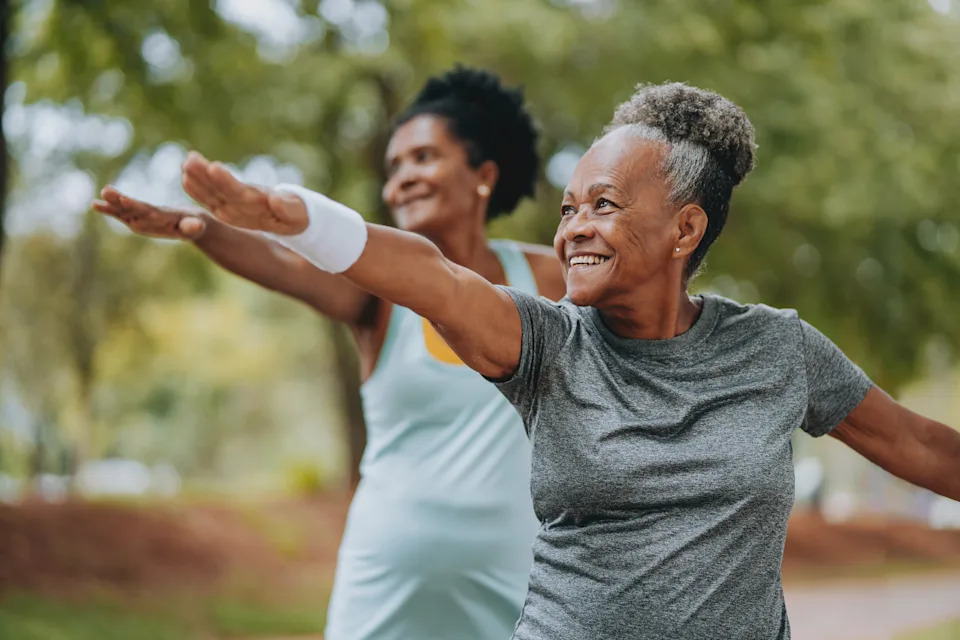
Make sure you build in adequate rest days to allow your body time to recover from exercise. (Getty Images)
Without adequate time to recover, even the fittest athletes risk a higher likelihood of injury, and are less likely to build muscle and see weight loss results from their workouts.
Studies have shown that older adults need more recovery time than younger adults, so prioritising more rest days in your training takes precedence.
“You can only train as well as you can recover,” explains Herron. “Think of your body like a battery… if you don’t fully recharge it between sessions, you’ll burn out before you see progress.”
That means building in one or two extra rest days per week, prioritising quality sleep and supporting recovery with good nutrition and gentle movement like stretching or walking on non-training days.
When it comes to strength work, the focus should shift toward functional, multi-joint movements that mimic movements from everyday life, such as lifting shopping, opening doors or reaching for high-up items.
“Exercises like trap bar deadlifts or squats are particularly helpful at this stage because they follow the same plane of movement as those real-life actions, like standing up from a chair or picking something off the floor,” says Herron.
If you’re keen to work on your functional fitness, there are lots of free follow-along tutorials on YouTube, or you could wear a backpack filled with tins from the cupboard while completing odd jobs around the house, to add a resistance challenge to daily movement.
“Building functional strength is often the key to maintaining independence and quality of life as you age,” Herron adds.
Read more on weight loss:
